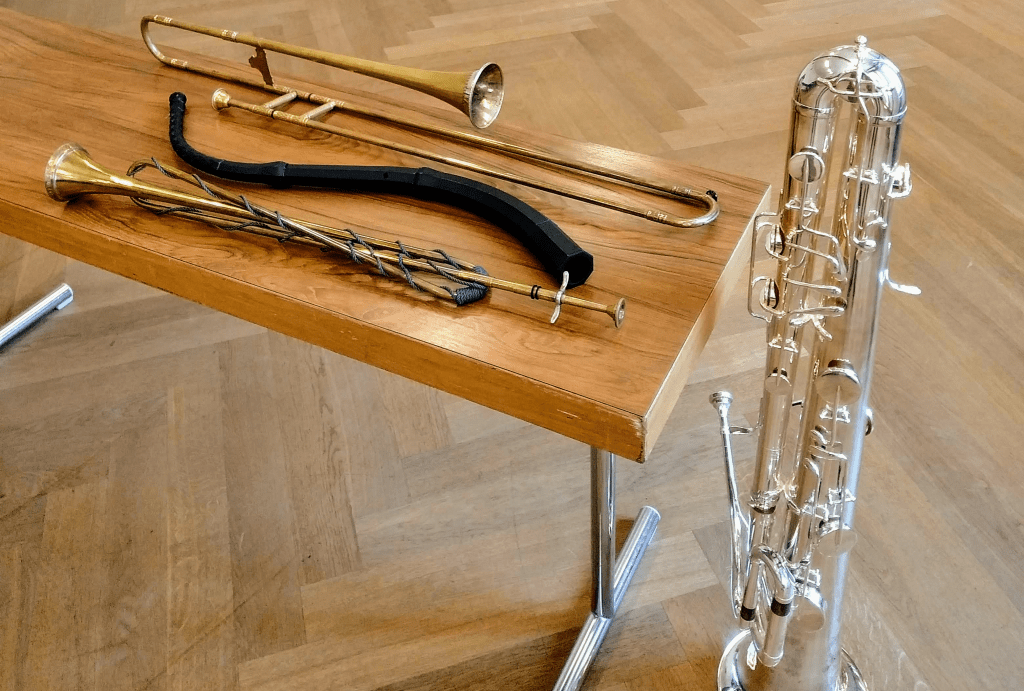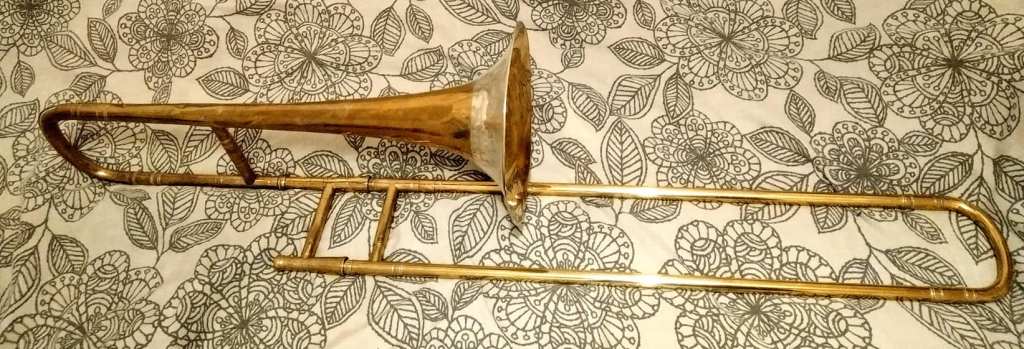
Here are the instruments I use for different repertoires
Renaissance and baroque tenor trombone
Made by Egger (2014), after an original by Sebastian Hainlein the Younger (1632)
This is one of my main instruments, which I use for Renaissance and baroque repertoire, up to Mozart (the Austrian classical trombones where still very much sackbut-like).
Tuning:
A at a=466, 452 and 440
Bb at a=440 and 430
G at 466
Renaissance and baroque bass trombone
Made by Egger (2022), after an original by Isaac Ehe (1612)
I worked together with Gerd Friedl at Egger to design this new model of bass sackbut. Starting from their existing model after Ehe, we incorporated design features from other bass trombones, notable instruments by Hans Hainlein (1631) and Sebastian Hainlein the Younger (1622). The bell section can be entirely disassembled and, with different combinations of crooks, achieve a very large variety of tunings and performance pitches. I use this instruments for music of the late Renaissance and baroque, as well as for Viennese classical repertoire (the bass trombone by Huschauer (Vienna, 1813) has the same bell diameter and a very similar bell profile and bore size – its bore is even a bit smaller than this early baroque instrument). I play it primarily in D, often in G, and occasionally in F or other tunings.
See this page.
Tuning:
D at any pitch from a=490 down to 390
G and F at around a=466, 452, 440, 430, 415
C at a=490 down to 440 (small “Oktavposaune” after Praetorius)
Renaissance slide trumpet
Made by Graham Nicholson and myself (2018), after an original by Marcian Guitbert (1442)
This instrument is based on the sole surviving brass instrument of the 15th century, a natural trumpet (probably a military or signal instrument) found virtually intact and preserved by mud at the bottom of a castle well. Adapted as a slide trumpet, it works exceptionally well for the Renaissance repertoire for alta capella. We based the knot-shaped wrap after ceiling paintings at the cathedral of Valencia. This instrument uses a mouthpiece with a wide, flat rim and a perfectly conical cup.
Tuning:
D at a=466
In practice, as this music is almost always transposed by a second or fifth, I think of it as an instrument in C or G
Tenor cornetto
Made by Ricardo Simian, 3D-printed
I use the tenor cornetto for alto parts in Italian Renaissance and early baroque repertoire, and in particular to play the third cornetto part in the Magnificat of the Monteverdi Vespers.
Tuning:
C at a=466
Bb Ophicleide
Made by Wessex, after an original by Gautrot
As a more exotic double, I tremendously enjoy playing the ophicleide in Romantic orchestral repertoire (Mendelssohn, Berlioz, etc). It is a fascinating and exciting instrument to play.
Romantic French tenor trombone
Original, made by Courtois & Mille around 1890
This beautiful original 19th century instrument is perfect for the French romantic repertoire. Its very small bore and bell size make it a very different experience playing the classic Paris Conservatoire concours pieces or the solo from Ravel’s Bolero as we are used with modern instruments.
A very practical feature is its very long tuning slide, which allows me to tune it as high as a=450 and as low as a=430. The bell is in 4th position, like on a sackbut.



Romantic German tenor trombone
Original, made by Otto Pollter, late 19th century
Otto Pollter of Leipzig made both instruments that were modern for his time and very traditional designs. This instrument falls in the latter category, and has almost identical dimensions and features as the instruments of Sattler and Penzel of the 1830s, making it a perfect choice for romantic German repertoire.

German bass trombone
Anonymous, 1st half 20th century
This unmarked trombone, possibly an exam instrument for an apprentice maker, probably dates to the early 20th century or the inter-war period. It is convertible as between a straight Bb or Bb/F instrument. Although its dimensions are not particularly large, it has a rather wide bell stem and throat, and really comes alive with a large mouthpiece. It functions best as a bass trombone and works extremely well for romantic German repertoire.

